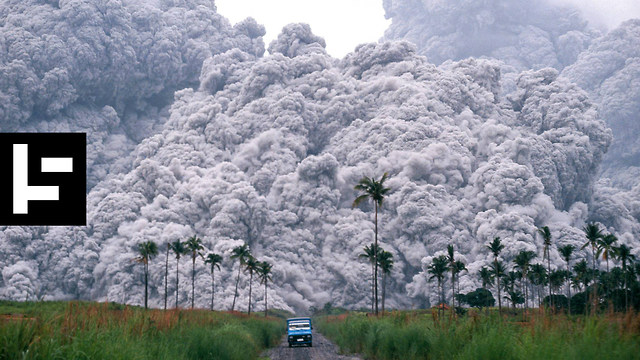Premium Only Content

1816: The Year Without Summer
In 1816 folks had a good excuse to complain about the weather, thanks to a huge volcanic eruption from Mount Tambora in Indonesia the previous year, making it the largest volcanic eruption in recorded history. Worldwide famine, floods & disease - all thanks to enough toxic ash in the sky to turn summer into winter.
Exactly 200 years ago, we had a year that is actually known as “the year without a summer”. In 1815, Mount Tambora (located in Indonesia) blew its top. But just how large was this event? Volcano eruptions are measured on a scale called the Volcanic Explosivity Index (VEI), measuring explosivity, volume of ash and the height ash reaches into the atmosphere. For comparison,the eruptions of Mount St. Helens and Vesuvius were only ranked as 5’s on the index. The eruption of
Mount Tambora was a 7, making it the largest volcanic eruption in recorded history. While the immediate area surrounding the volcano was burned and crops further away were covered in ash, the eruption caused a disruption in monsoon season in south-east Asia. In other parts of the world, the cloud caused a sudden and prolonged drop in temperatures, which led to perfect condition for the outbreak of cholera.
Not everything was as black and white, though. While the volcano was “throwing shade”, we started paving the road towards modern medicine, we got fantastic literature and Baron Karl Drais invented what is now known as the predecessor of the bicycle. See, something good can come out of bad things.
-
 6:05
6:05
WTMJMilwaukee
5 years agoGet in Shape Without Exercise this Summer
33 -
 0:09
0:09
alexlunaviewer
5 years ago $0.75 earnedTeens enjoying their summer break without the fear of coronavirus
1.35K1 -
 0:04
0:04
amberleeanna
5 years ago $0.01 earnedSummer nights
87 -
 2:08
2:08
WKBW
5 years agoA summer without summer camps? Annual tradition for many up in the air amid COVID-19 pandemic
9 -
 0:14
0:14
SLAMVBAM
5 years ago $0.04 earnedSummer Storm
141 -
 1:46
1:46
KMGH
5 years agoWhat's Driving You Crazy? Out-of-state license plates without a year sticker
52 -
 0:08
0:08
vvvvv0
5 years ago $0.10 earnedWITHOUT YOU
4491 -
 1:04
1:04
KiwiLimon_SeasonalRecipes_English
5 years agoSummer Tinto
9 -
 0:21
0:21
JohnnyTrotta
5 years ago $0.02 earnedSummer hail
1901 -
 2:17
2:17
WPTV
5 years agoWhat will summer camp look like this year?
20